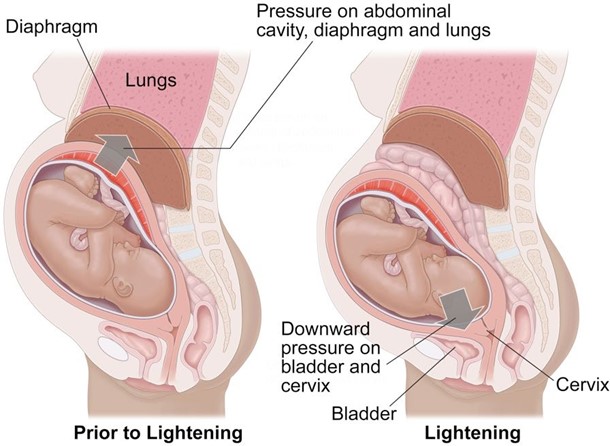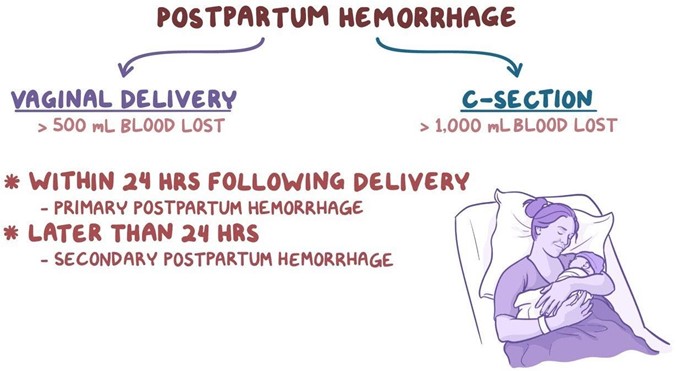Why is it important for the nurse to assess the bladder regularly and encourage the laboring client to void every 2 hours?
Select one:
Frequent voiding encourages sphincter control.
A full bladder impedes oxygen flow to the fetus.
Frequent voiding prevents bruising of the bladder.
A full bladder can impede fetal descent.
The Correct Answer is D
Choice A Reason: Frequent voiding encourages sphincter control. This is an incorrect statement that has no relevance to labor and delivery. Sphincter control refers to the ability to contract and relax the muscles that control urination and defecation. It is not affected by frequent voiding.
Choice B Reason: A full bladder impedes oxygen flow to the fetus. This is an incorrect statement that confuses a full bladder with a prolapsed cord. A prolapsed cord is a condition where the umbilical cord slips through the cervix before the baby and becomes compressed by the fetal head, which can reduce oxygen flow to the fetus. A full bladder does not affect oxygen flow to the fetus.
Choice C Reason: Frequent voiding prevents bruising of the bladder. This is an incorrect statement that exaggerates the effect of a full bladder on the bladder wall. A full bladder may cause some pressure or discomfort on the bladder, but it does not cause bruising or damage.
Choice D Reason: A full bladder can impede fetal descent. This is a correct statement that explains why it is important for the nurse to assess the bladder regularly and encourage the laboring client to void every 2 hours.

Nursing Test Bank
Naxlex Comprehensive Predictor Exams
Related Questions
Correct Answer is D
Explanation
Choice A Reason: Moderate amounts of deep red lochia. This is not a finding that would warrant further investigation, but rather a normal finding for the early postpartum period. Lochia is the vaginal discharge that occurs after delivery, which consists of blood, mucus, and tissue from the uterus. Lochia is usually deep red in color and moderate in amount for the first few days after delivery.
Choice B Reason: Sweating while afebrile. This is not a finding that would warrant further investigation, but rather a common occurrence in the postpartum period. Sweating is a mechanism of thermoregulation that helps the body eliminate excess fluid and electrolytes that were retained during pregnancy. Sweating does not necessarily indicate fever or infection.
Choice C Reason: Voiding 350 mL of blood-tinged urine. This is not a finding that would warrant further investigation, but rather an expected outcome for the postpartum period. Voiding large amounts of urine is normal in the postpartum period, as the body eliminates the excess fluid that was accumulated during pregnancy. Blood-tinged urine may be due to trauma or irritation of the urinary tract during labor or delivery, which usually resolves within a few days.
Choice D Reason: Heart rate of 115 beats/minute. This is because a heart rate of 115 beats/minute is higher than the normal range for an adult, which is 60 to 100 beats/minute. A high heart rate may indicate postpartum hemorrhage, infection, pain, anxiety, or dehydration. The nurse should further assess the client for other signs and symptoms of these conditions and notify the physician if necessary.

Correct Answer is B
Explanation
Choice A Reason: "If I try to talk to my partner during a contraction, I can't." This is an incorrect answer that indicates a sign of true labor, not false labor. True labor is a condition where there are regular and painful uterine contractions that cause cervical dilation and effacement, and lead to delivery of the baby and placenta. True labor contractions are usually strong and consistent, and they tend to increase or persist with activity or position changes. True labor contractions can be so intense that they interfere with speech or breathing.
Choice B Reason: ) "My contractions slow down when I walk around." This is because this statement by the client would lead the nurse to suspect that the woman is experiencing false labor, which is also known as Braxton Hicks contractions or practice contractions. False labor is a condition where there are irregular and painless uterine contractions that do not cause cervical dilation or effacement. False labor can occur throughout pregnancy, but it becomes more noticeable and frequent in late pregnancy. False labor contractions are usually weak and inconsistent, and they tend to decrease or stop with activity or position changes.
Choice C Reason: "I feel contractions start mostly in my back and they sweep around to the top of my abdomen." This is an incorrect answer that indicates a sign of true labor, not false labor. True labor contractions usually start in the lower back and radiate to the lower abdomen or groin, following a wave-like patern. False labor contractions are more likely to be felt in the upper abdomen or sides, without a clear patern.
Choice D Reason: "My contractions are about 6 minutes apart and regular." This is an incorrect answer that indicates a sign of true labor, not false labor. True labor contractions usually have a regular frequency and duration, and they become closer and longer as labor progresses. False labor contractions are more likely to have an irregular frequency and duration, and they do not change significantly over time.
Whether you are a student looking to ace your exams or a practicing nurse seeking to enhance your expertise , our nursing education contents will empower you with the confidence and competence to make a difference in the lives of patients and become a respected leader in the healthcare field.
Visit Naxlex, invest in your future and unlock endless possibilities with our unparalleled nursing education contents today
Report Wrong Answer on the Current Question
Do you disagree with the answer? If yes, what is your expected answer? Explain.
Kindly be descriptive with the issue you are facing.
